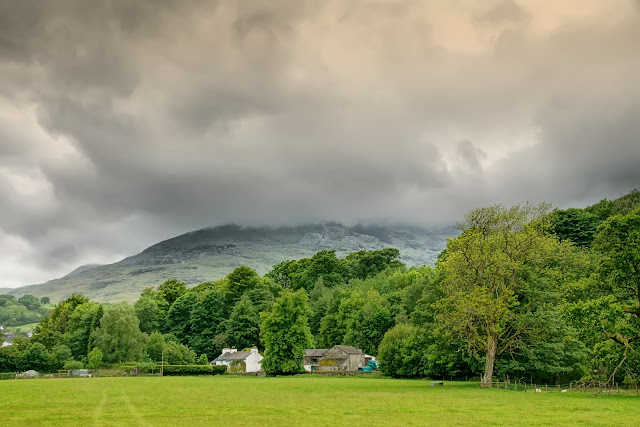Tarn Hows
Area: In the valleys
Route Grade Easy
Start Point Waterhead Car Park Coniston
Finish Point Waterhead Car Park Coniston
Distance 5.0 miles
Approx Time 2 - 3 hours
Coniston in the Lake District can be found at the northern end of Coniston Water and overlooked by the Old Man of Coniston 2,627ft [801m]. The village is in a wonderful setting and is a popular centre for exploring this area of the Lake District, although it is slightly off the beaten track.
Coniston grew from the mineral wealth of copper which was found in the mountains and mined especially during the 18th & 19th Century's with the village expanding. The workings from these mines can be seen in the area, especially in Coppermines Valley. Slate quarries can be also found in the area and a few are still worked.
Volcanic rocks of the Coniston Fells were laid down around 460 million years ago. The total thickness of the BVG laid down in the Lake District is over 7km, yes 7km thick, a staggering amount.
Rose Castle Cottage is a delightful 19th-century Grade II listed cottage, situated high above Tarn Hows, the iconic Lake District spot. There's fantastic walking from the doorstep - you'll hardly need to get in your car! This is an ideal base at the heart of the Lakes for walking, cycling, fishing or just soaking up the tranquillity of the area.
Tarn Hows is an area of the Lake District National Park, containing a picturesque tarn, approximately 2 miles (3.2 km) northeast of Coniston and about 1.5 miles (2.4 km) northwest of Hawkshead. It is one of the most popular tourist destinations in the area with over half a million visitors per year in the 1970s and is managed by the National Trust.
coins tree trunk
HERDWICKS are sturdy, coarse-woolled sheep found mainly on the Lake District fells in Cumbria. The true origin of the breed is not known. It is thought that sheep may have come into Cumbria from a Spanish Armada ship which was wrecked off the Cumbrian coast, but this cannot be substantiated. They may well have been introduced by Norse-Irish settlers in the 10th and 11th Centuries, or they may be derived from animals introduced by Neolithic or Bronze Age herdsmen.
Dry Stone Wall
Outside the Museum (next to the Usher miniature village) is a fine example of a traditional Lakeland Dry Stone Wall. These walls can be seen all over the Lake District. This one was specially built as a "show wall" to illustrate the different techniques and features of a Cumbrian Wall. It was built by Andrew Loudon, a master waller and regular competitor in walling competitions. He lives at Bowmanstead , Coniston.
The John Usher Miniature Village
The miniature village displayed by the museum is to honour the memory and unique skills of the late John Usher. John was a member of the Usher family of Coniston who have been in the building business locally for over 100 years. One project he was involved with was the construction of Coniston's memorial to Donald Campbell on the green adjacent to the T.I.C.
In his spare time he constructed (in stone) planters, bird tables, nest boxes and sundials. Also, from his late teens John enjoyed building houses in miniature. These were done for his own pleasure and he had no intention of them being on general display. His earlier model houses were given a whole slate roof but later ones had individual slates just like roof tiles.
John Ruskin (1819-1900) was one of the greatest Victorians; his range of interests and achievements were quite staggering. He was an artist, art critic, amateur geologist, a teacher, writer, social critic and philosopher. He thought that it was fundamental to make links between all subjects and disciplines - for example, science and religion; nature and art. Somehow he could always see the whole picture. Leo Tolstoy said that Ruskin was: "one of those rare men who think with their hearts."
On Thursday 7th December 2006, Gina Campbell formally gifted Bluebird K7 to the Ruskin Museum. In agreement with the Campbell Heritage Trust and the museum, Bill Smith is to organize the restoration of the boat, which is now under way. The intention is to build it back to running order circa January 4th 1967. Bill has said that this will take two years to accomplish.
Bluebirds K7's Orpheus Engine is now displaying at the museum,
along with Arthur Ransome's boat 'Mavis' (Amazon).
'NEW BLUEBIRD WING' - extension to The Ruskin Museum.





















No comments:
Post a Comment